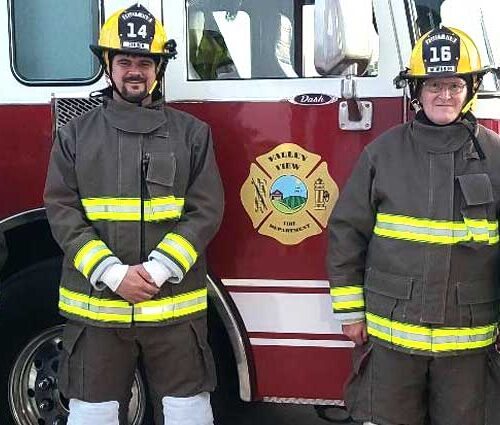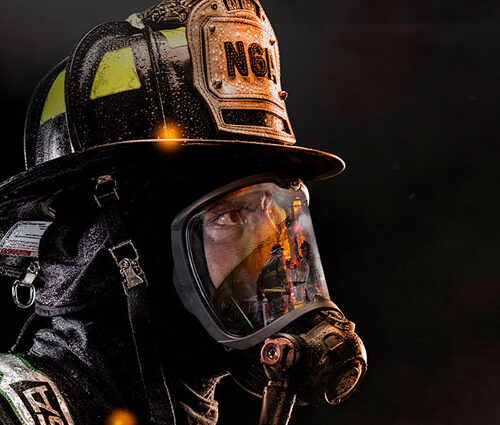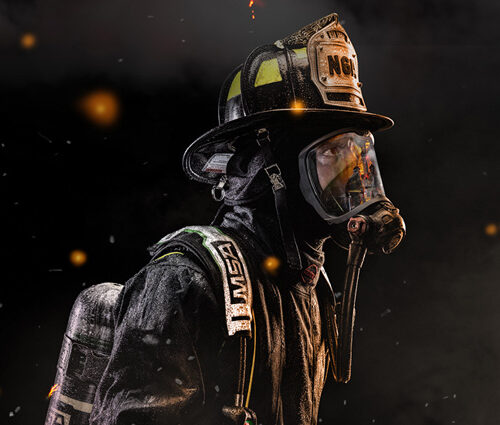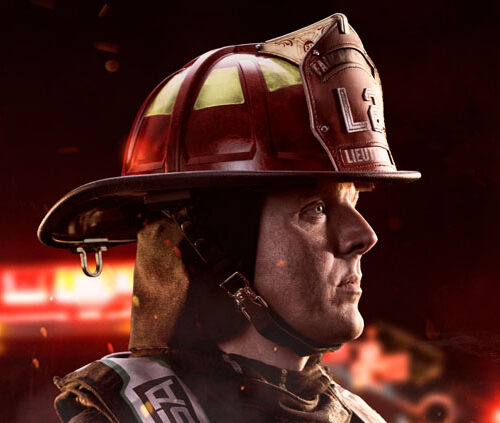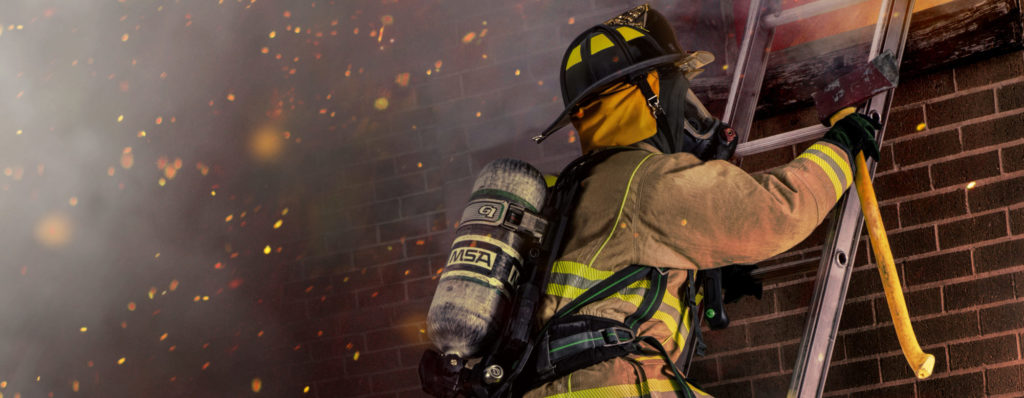
Getting the right turnout gear for your department is critical, but it is just one component of firefighter health and safety. Firefighters need to understand not only the performance of their gear and proper donning and doffing techniques, but also the limitations of the gear. Today’s three-layer ensembles feature advanced protection using the most technically advanced materials; but the human body has not changed.
The 3-Layer System
A typical turnout has an outer shell, a moisture barrier, and then one, two, or three layers of fabric that make up the thermal lining package. Air is trapped in these thermal layers to insulate the firefighter from heat.
Outer Shell
The main purpose of the outer shell is to protect the firefighter from direct flame and heat; it also contributes to abrasion and cut protection as well as some thermal protection. Flame resistance is commonly measured by the Limiting Oxygen Index (LOI), which is the amount of oxygen required to make the material burn. Outer shells are blends of man-made petroleum products that have different LOI values. Many outer shells are blends of KEVLAR®, which has a low LOI, and PBI® or PBO, which have higher LOIs – the blend creating a synergy that enables the shell fabric to work at a higher temperature. The different mills that manufacture outer shell fabrics from these products also engineer additional attributes into their materials, such as strength, flexibility, and abrasion resistance.
Embrittlement is a total breakdown of the outer shell. Even with the highest level of flame resistance, an outer shell will eventually break down when exposed to flames and could result in serious burns.
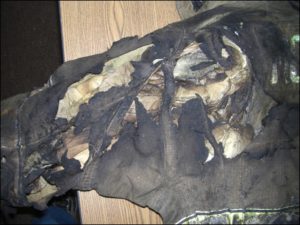
Dye sublimation occurs when the dye in an outer shell fabric dissipates in heat, generally at about 450°F. This discoloration does not automatically mean the outer shell is compromised, but it is a warning that all three layers of the garment must be inspected to validate whether the garment is safe to remain in service. Another cause of dye sublimation is exposure to ultraviolet rays, which is an indication that the garment is being stored improperly and could eventually lead to a complete loss of tensile strength.
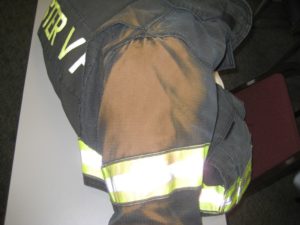
Moisture Barrier
The primary purpose of the moisture barrier is to protect the firefighter from what NFPA 1971 refers to as the “common liquids”: swimming pool chlorine, battery acid, aqueous film forming foam, surrogate gasoline, fire-resistant hydraulic fluid, and automobile antifreeze fluid. Additionally, the moisture barrier provides protection from blood borne pathogens; it should be noted, however, that these tests are performed on as new fabric and for a limited period of time. The other purpose of the moisture barrier is to allow perspiration to move away from the wearer, also referred to as “breathability.”
The moisture barrier is typically a bi-component membrane bonded to a lightweight fabric substrate.
Thermal Liner
The thermal liner provides a majority of the thermal protection from the ambient heat in the room. Thermal liners consist of a face cloth and batting. The face cloth can be spun fiber or a blend of spun and filament fibers. The filament adds slickness to the face cloth, which makes it comfortable to wear and work in. A spun fiber means that the mill converts bales of fiber by spinning them into yarns. The yarns have protruding random fibers, which help wick moisture off the skin. The batting is typically NOMEX® and/or KEVLAR® fibers and can be a single-layer product like a felt, called needlepunch, or multiple layers of spun lace, which is produced by using water jets to entangle the filaments of the fiber.
Performance Testing
NFPA 1971, Standard on Protective Ensembles for Structural Fire Fighting and Proximity Fire Fighting, has established minimum performance levels for personal protective equipment (PPE). This standard defines structural fire fighting as “the activities of rescue, fire suppression and property conservation in building, enclosed structures, vehicles, marine vessels, or like properties that are involved in a fire or emergency situation.’’ Fire departments respond to all types of activities and emergencies which is why NFPA 1851, Standard on Selection, Care, and Maintenance of Protective Ensembles for Structural Fire Fighting and Proximity Fire Fighting, requires every fire department to perform a risk assessment in order to determine the appropriate gear for their specific firefighting tactics. This risk assessment should include, but not be limited to, the hazards that can be encountered by firefighters based on the following:
- Type of duties performed
- Distinguishing response activities for different potential incidents
- Organization’s experiences
- Incident operations
- Geographic location and climate
- Specific physical area of operation
- Likelihood of or response to CBRN terrorism incident
- Need for two sets of ensemble elements or spare ensemble elements
Structural turnout gear must pass numerous performance tests outlined in NFPA 1971, a few of which are:
- TPP (Thermal Protective Performance) ‒ is used to measure the insulating performance of the three-layer system by evaluating how quickly heat is transferred from the outside of the garment to the inside when exposed to both convective and radiant heat.
- THL (Total Heat Loss) ‒ is used to evaluate the amount of heat that can be transferred out of the garment composite via both sweat evaporation from the wearer’s skin and conduction through the garment to the outside environment.
- Flame Test ‒ specifies time in seconds for materials used in construction to self-extinguish after exposure to direct flame, as well as allowable char length.
- Heat and Thermal Shrinkage Test – is a 500°F for 5 minute oven exposure which is used to evaluate specific materials for shrinkage, melting, separation, ignition, or dripping. Hardware evaluated against this test must also remain functional following the exposure.
- CCHR (Conductive, Compressive Heat Resistance) ‒ specifies minimum protective insulation in knees and shoulders, which are more likely to become compressed; thermal insulation is reduced under compression.
- SET (Transmitted and Stored Thermal Energy Test) – is used to evaluate the ability of sleeve enhancements to store and then transfer heat through the composite to the skin.
Seconds vs. Minutes
All testing to the NFPA standards is intended to help keep firefighters protected in perilous and volatile environments where conditions can change in seconds. As explained above, one measure of turnout gear performance is the TPP test, which simulates a flashover condition.
If you take the TPP value of the garment composite and divide it in half, the result is roughly the number of seconds before a second-degree burn would occur. With a minimum requirement of 35, anything beyond 17.5 seconds (minimum TPP value ÷ 2) is sufficient to meet the standard. But firefighters cannot assume they have 17.5 seconds to escape a flashover. TPP testing is conducted in a controlled laboratory environment with an ambient temperature of 70°F. When a firefighter becomes trapped in a burning room, how hot is that fire? How hot is it when crawling on the floor? It is literally hundreds of degrees and getting hotter by the second. Additionally, during the time the firefighter is in that room, the gear is absorbing heat. A firefighter in a flashover might have only seconds before suffering second-degree burns because the temperature in the room is constantly escalating.
Visit our website for more educational resources on turnout gear care, maintenance, materials, and more. We also encourage you to visit NFPA.org and review the NFPA standards for a complete listing of all of the multiple tests and requirements that gear must be evaluated against in order to be labeled as NFPA compliant.


